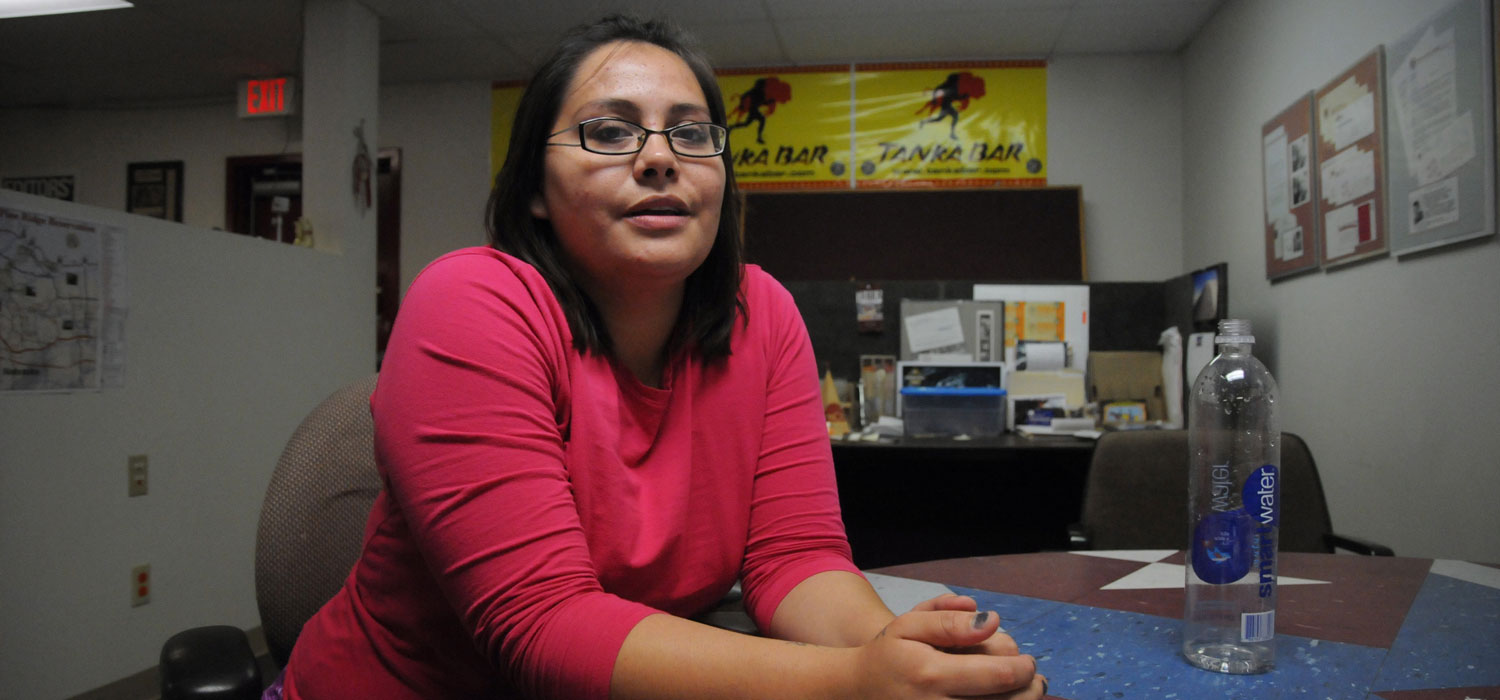
<p>In this Wednesday, Sept. 30, 2015, photo, Rachel Hunter, speaks to The Associated Press, in Kyle, S.D. Hunter, who works at a food company, has been approved for a mortgage for a home in an eco-friendly housing community on the Pine Ridge Indian Reservation being developed by Thunder Valley Community Development Corp. Photo by James Nord/AP.</p>
Land status remains a key structural barrier to mortgage lending and homeownership in tribal areas, despite some success in increasing lending.
The homeownership rate among American Indians and Alaska Natives is growing, but still lags behind the general US population. Mortgage lending to the American Indian and Alaska Native (AIAN) population poses unique challenges because of landownership arrangements in tribal areas. And programs created to encourage mortgage lending have not been universally successful for AIAN populations.
Understanding landownership and status in Indian Country
The legal status of land in Indian Country is complicated and makes obtaining mortgages difficult.
The General Allotment Act of 1887, or the Dawes Act, allows the federal government to hold some land in Indian Country in trust for specific tribes or individual Native Americans. Tribal trust lands benefit native communities in many ways, including taxation exemption and assurance that the land remains available for tribal members. Across most of the United States, private landholders can mortgage or sell their land as they wish, but land held in trust is not owned outright by the homeowner. Land cannot be taken out of trust or be used to secure a mortgage without approval from the Bureau of Indian Affairs.
Attempts to promote mortgage lending in Indian Country
In 1992, Congress established the Section 184 Program, which provides a 100 percent guarantee to lenders, to encourage mortgage lending in Indian Country. The borrower can be a tribal member, tribe, or tribally designated housing entity.
Our analysis shows an increase from 156 loans in 1996—the last time a study of mortgage lending in Indian Country was conducted—to just over 4,300 loans in 2012.This 2,600 percent increase is an enormous boost to lending in Indian Country. Still, of the 28,840 mortgages granted between 1994 and 2015, 88 percent were on privately owned land within Indian Country and just 10 percent were on tribal trust land within Indian Country.

Land status matters for AIAN homeownership
This gap highlights that land status may hinder mortgage lending, because mortgage applicants cannot use land held in trust as collateral for securing a mortgage. Land status is a factor unique to AIAN households and a direct result of public policy, including the Dawes Act and other historical developments. The proportion of tribal land that is trust land varies across Indian Country. Current housing financing policies may sustain disparities in lending by not accounting for the various types of landownership throughout Indian Country.
These findings amplify the need for restructuring lending policies to better serve the AIAN population, especially improving Section 184 to be more successful on tribal trust land. Current lenders in Indian Country suggested expedited mortgage processing on tribal trust lands to encourage borrowing. In addition to addressing the complexities of landownership, strategies lenders suggested include affordable and flexible lending products and homebuyer education and counseling programs to help with economic barriers to homeownership.
The Section 184 program is showing great success making homeownership attainable for households in Indian Country. As policymakers continue promoting homeownership to underserved markets, however, they must acknowledge the complicated land policies on tribal trust land and improve lending in these areas for the AIAN population.
Let’s build a future where everyone, everywhere has the opportunity and power to thrive
Urban is more determined than ever to partner with changemakers to unlock opportunities that give people across the country a fair shot at reaching their fullest potential. Invest in Urban to power this type of work.